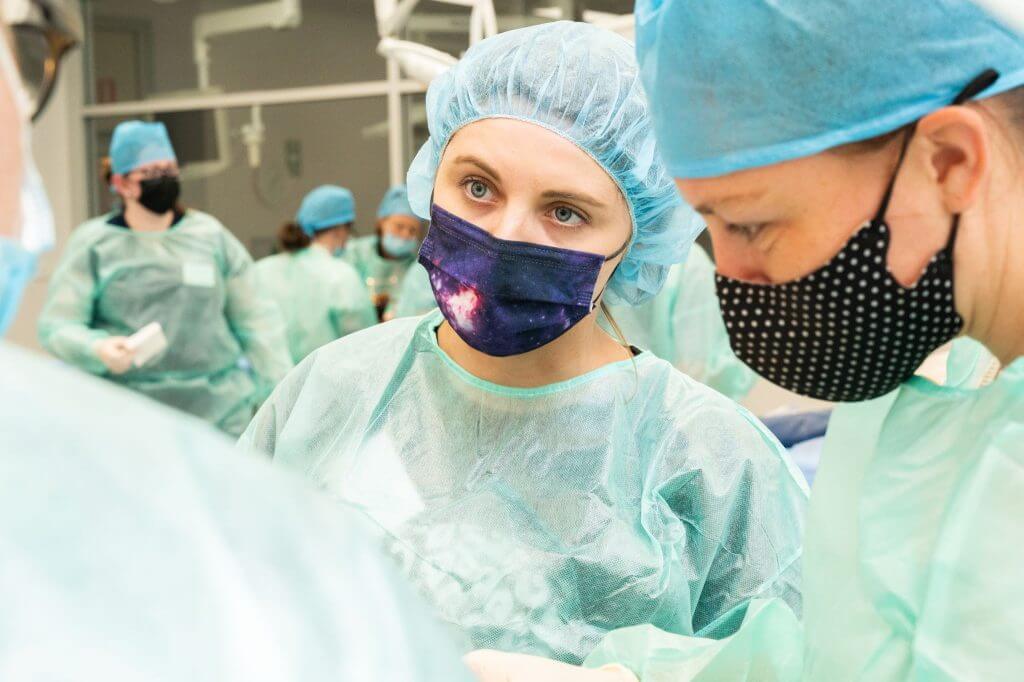
One thing I hear a lot is that vet nurses and techs want to use their technical skills more often and in more challenging ways.
I’m a proud RVN with diplomas in both general practice and surgery. I’ve been working in this industry for 18 years, and I’ve worked hard to achieve these qualifications. Yet I’m also one of the fortunate few, because I work in specialist-level referral practice where my clinical skills as a vet nurse are both acknowledged and rewarded. I love my job, and the opportunity it gives me to contribute my skills and experience to the work we do.
In my workplace, for example, TPLO surgery is performed with a sterile scrubbed assistant. This presents an opportunity for nurses to expand their skills and get involved in this technical area of being a veterinary nurse or technician. As you’d imagine, the degree of responsibility expected of a scrub nurse depends on clinic protocol and surgeon preference, as well as the training and experience of the nursing staff.
The core duties of a scrubbed assistant for TPLO usually involve:
- Holding the leg in position – a key duty, considering the tibia needs to be kept parallel and the tarsus flexed at a specific angle
- Assisting with rotation of the osteotomy – this typically involves holding the leg and the rotation pin steady during the placement of a fixation pin
- Retracting tissues – if self-retracting instruments like Gelpies are not used, a Senn retractor may be used to retract skin and subcutaneous layers
- Haemostasis using gauze swabs – using a firm dabbing motion rather than a wiping motion
- Suction – using a surgical suction device to remove blood and lavage fluid from the surgical site, as well as suctioning blood and marrow from drilled holes
- Lavage – moistening tissues with sterile saline, and applying it during drilling, to minimise heat and friction
- Leading and cutting suture – keeping the leading edge of the suture out of the way to avoid tangling, and cutting suture material during closure.
Additional duties include:
- Draping – using a four-quadrant drape technique, sterile foot wrap and then ideally an over-drape
- Loading scalpel blades onto the scalpel handles
- Loading and passing suture
- Keeping track of swabs and other consumables
- Keeping track of blood loss
- “Running the table” – keeping instruments neat and tidy, wiping down drill bits after each use, changing the attachments on the power equipment, handing the surgeon the next instrument required (especially during fixation of the plate), retrieving and measuring screws
- Placing the fixation pin – some surgeons prefer to hold the rotation themselves while the assistant places the fixation pin.
This isn’t an exhaustive list, but it gives you a snapshot of my surgical responsibilities, and how you could become involved with the surgical aspects of veterinary nursing.
There are always opportunities to grow professionally, and if there’s one piece of advice I’d give you, it’s to be prepared to invest in your career. Some high-quality continuing education is the easy choice.
VetPrac runs hands-on workshops for nurses and techs like you, run by experienced and passionate educators like me. We recently hosted a TPLO workshop with a dedicated nurse and technician stream, and hand on heart, I can say that teaching in this sort of environment gives me the biggest buzz! If you’re ready to take on a clinical challenge and reach further in your career, join the Waitlist for the next course, and hopefully, I’ll see you there.
Rhonda achieved her Certificate IV in Veterinary Nursing in 2007, a Diploma in Veterinary Nursing (General Practice) in 2018, and a second Diploma in Veterinary Nursing (Surgery) in 2019. She has maintained Accreditation since 2009 and was one of the first nurses in Australia to become an AVNAT Registered Veterinary Nurse.
Rhonda spent 12 years in GP (including 5 years as nursing manager), moving to speciality practice in late 2015 and has since been a full-time surgical and anaesthesia nurse. She lectures locally and nationally on anaesthesia, surgery and critical care topics, is a VNCA divisional committee member for South Australia and a discussion board moderator for the VIN Veterinary Support Personnel Network.
Rhonda is an absolute inspiration to us all. If you’re a veterinary nurse or veterinary technician and you’d like to meet Rhonda, join the Waitlist and watch your inbox for more exciting nurse and tech CE courses in 2023!
